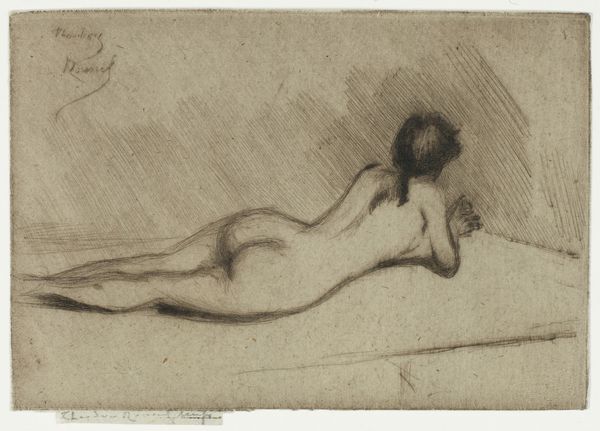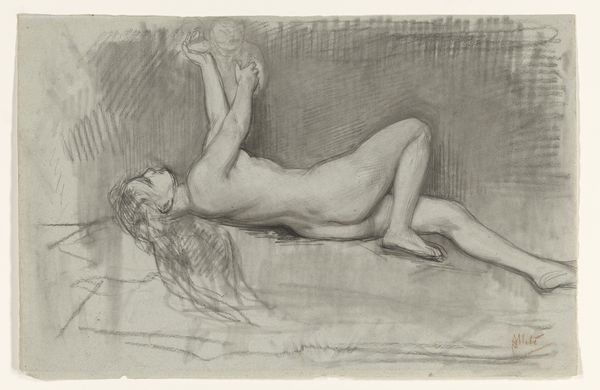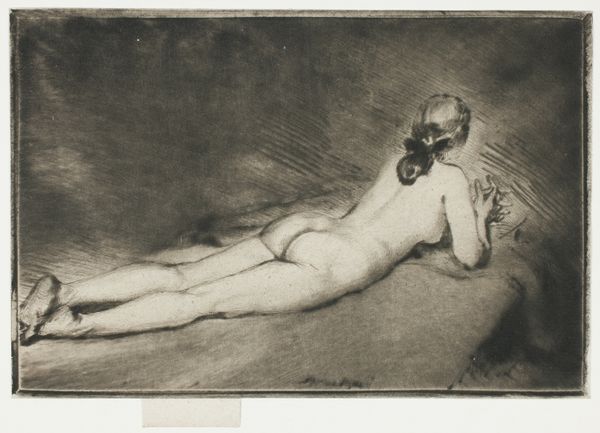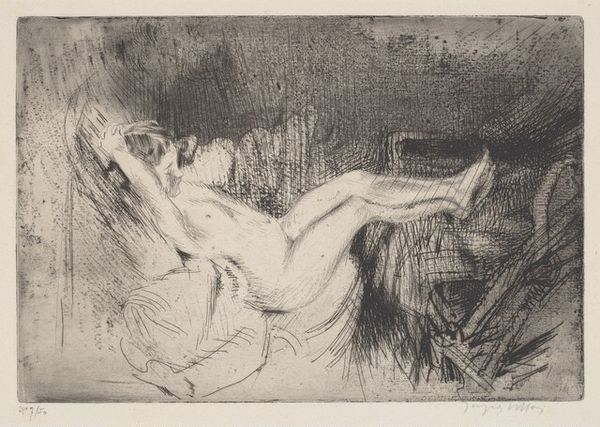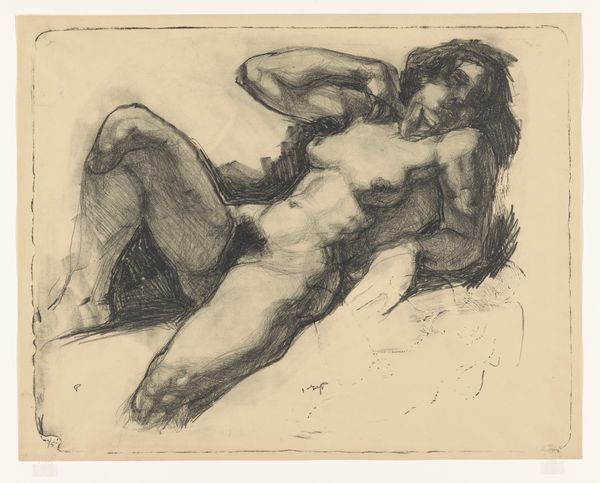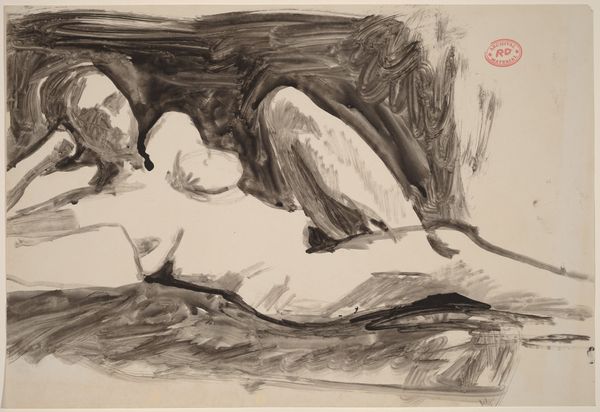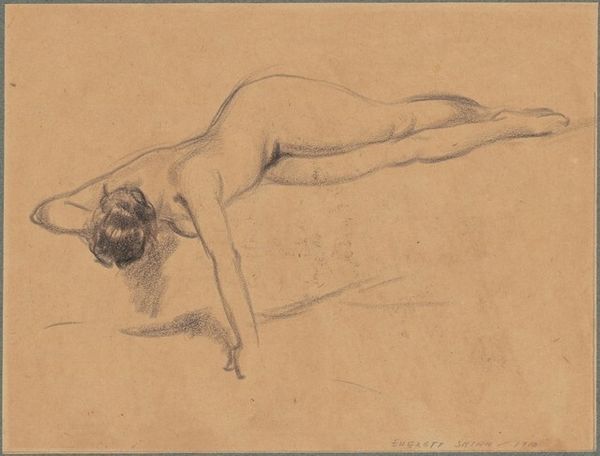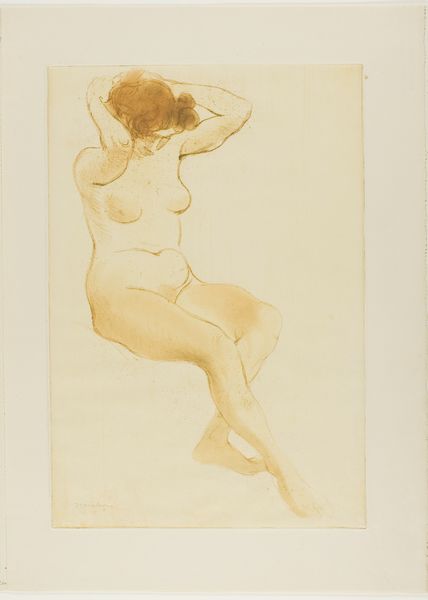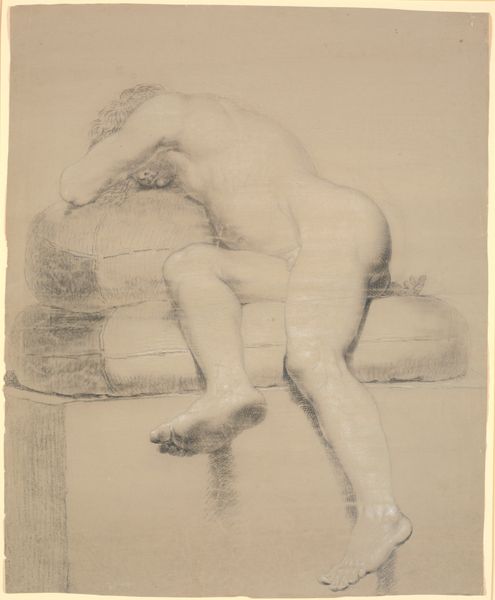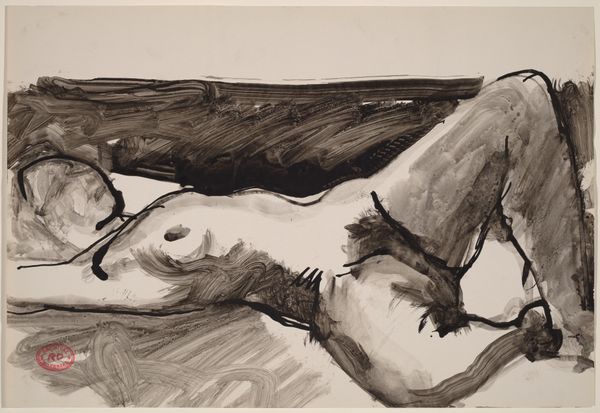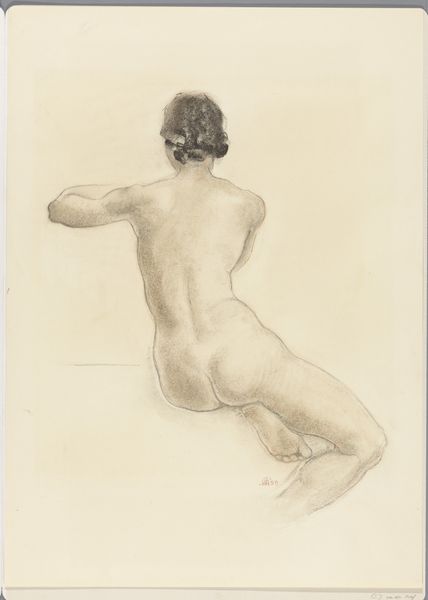
drawing, print, etching, intaglio, paper, ink
#
pencil drawn
#
drawing
#
art-nouveau
# print
#
etching
#
intaglio
#
charcoal drawing
#
figuration
#
paper
#
charcoal art
#
ink
#
pencil drawing
#
line
#
symbolism
#
genre-painting
#
history-painting
#
nude
#
erotic-art
Dimensions: 96 × 146 mm (image); 101 × 150 mm (plate); 106 × 150 mm (sheet)
Copyright: Public Domain
Curator: Immediately, this etching gives me a sense of delicate introspection. The lines are soft, almost blurred, conveying a dreamy, melancholic quality. Editor: This is "Nude Figure Lying Down" by Theodore Roussel, created around 1906. It’s an intaglio print made using etching, with ink on paper. Look closely at the figure's pose and the background. Curator: The contrasting textures are striking; the smoothness of the nude figure against the almost violently scratched background. The artist directs your focus purely toward the human form, which I see as the work's major semiotic achievement. Editor: I'm drawn to the actual making. The marks and scratches feel raw, and you imagine the physical effort of the etching process. What kind of plate was used? The texture makes you want to trace the artist’s labor, the repetitive acts and labor inherent in the intaglio production. Curator: Notice how Roussel employs a limited range of tonality, which flattens the space and accentuates the line work. It pushes us to assess the construction, which results in form that’s simplified and evocative. Editor: Yes, but think about the wider accessibility of prints in that period! This artwork, originally made using copper plates which were then likely re-used. I would emphasize the role that printmaking played in democratizing the depiction of nudes, expanding distribution of risqué or beautiful content among a wider middle class of art lovers. Curator: The interplay between light and shadow subtly models the figure, defining her curves and adding a sensuous dimension. Observe too that it is not explicitly about idealized beauty, or sensuality alone. It conveys human fragility in the composition. Editor: Well, given the processes and proliferation of print at the time, there’s arguably much sensuality created for wide-spread appeal, so it must also appeal to something. Curator: Indeed. In sum, the artwork, the lines, tonality—a harmony that provokes. Editor: Ultimately it allows the viewer to connect to the tactile processes from where Roussel’s aesthetic vision originated.
Comments
No comments
Be the first to comment and join the conversation on the ultimate creative platform.

